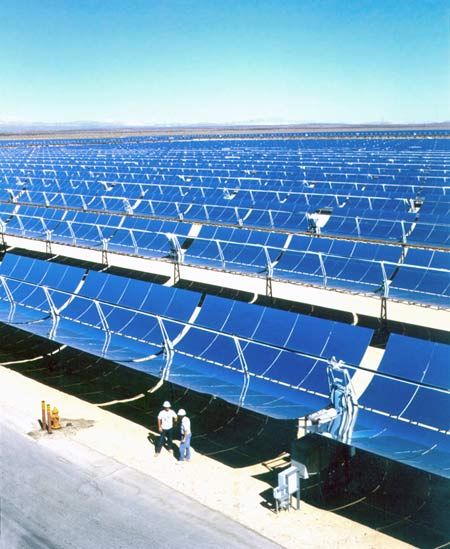Scheme to Curb Global Warming Could Backfire

One proposed plan to save the planet from global warming — by injecting particles to intercept the sun's light — would have the unintended, and ironic, effect of making a key alternative energy source, solar power, less effective, a new study points out.
Several "geoengineering" schemes have been proposed to curb the warming effect of greenhouse gases accumulating in the atmosphere. One of these takes its cue from observations of the effects of huge volcanic eruptions on global climate.
For example, when the Philippines' Mt. Pinatubo erupted in 1991, it rocketed volcanic ash and gases up into the atmosphere. Some of this volcanic confetti hovered in the stratosphere, circulating around the world, and caused the global surface temperature to drop by almost 1 degree Fahrenheit (0.5 degree Celsius) for two years afterward.
The particles cause the cooling by absorbing, reflecting and scattering incoming solar rays back to space.
Since then, some scientists have proposed that sulfur particles could be artificially injected into the atmosphere to cause a cooling that would help offset the warming caused by carbon dioxide and other greenhouse gases.
Several problems with this proposal have been identified, including the need to continuously inject the particles and the potential for acid rain, caused by the sulfur aerosols (tiny particles), being sucked up by water in the atmosphere.
The new study, conducted by the National Oceanic and Atmospheric Administration and detailed online on March 11 in the journal Environmental Science & Technology, found another hiccup in the plan: the amount of sunlight available for use by solar plants would be reduced.
Sign up for the Live Science daily newsletter now
Get the world’s most fascinating discoveries delivered straight to your inbox.
Direct and diffuse
Study author Daniel Murphy found that particles in the stratosphere did indeed reduce the amount and change the nature of the sunlight that strikes the Earth. Though a fraction of the incoming sunlight bounces back to space (which causes the cooling effect), a much larger amount becomes diffuse, or scattered, light.
On average, for every watt of sunlight the particles reflect away from the Earth, another three watts of direct sunlight are converted to diffuse sunlight. Large power-generating solar plants, part of the effort to reduce fossil fuel use, that concentrate sunlight for maximum efficiency depend solely on direct sunlight and cannot use diffuse light.
The plants use curved mirrors or other methods to concentrate the light, which allows them to generate energy at a lower cost. Flat photovoltaic and hot water panels, commonly seen on household roofs, use both diffuse and direct sunlight. Their energy output would decline much less than that from concentrating systems.
Murphy saw this change in the type of light before and after the Pinatubo eruption: After the eruption of Mt. Pinatubo, peak power output of Solar Electric Generating Stations in California, the largest collective of solar power plants in the world, fell by up to 20 percent, even though the stratospheric particles from the eruption reduced total sunlight that year by less than 3 percent.
"The sensitivity of concentrating solar systems to stratospheric particles may seem surprising," Murphy said. "But because these systems use only direct sunlight, increasing stratospheric particles has a disproportionately large effect on them."
- Video – Learn About Changes to the Atmosphere
- Global Warming Fix: Help the Earth Cure Itself
- Alternative Energy News and Information

Andrea Thompson is an associate editor at Scientific American, where she covers sustainability, energy and the environment. Prior to that, she was a senior writer covering climate science at Climate Central and a reporter and editor at Live Science, where she primarily covered Earth science and the environment. She holds a graduate degree in science health and environmental reporting from New York University, as well as a bachelor of science and and masters of science in atmospheric chemistry from the Georgia Institute of Technology.











